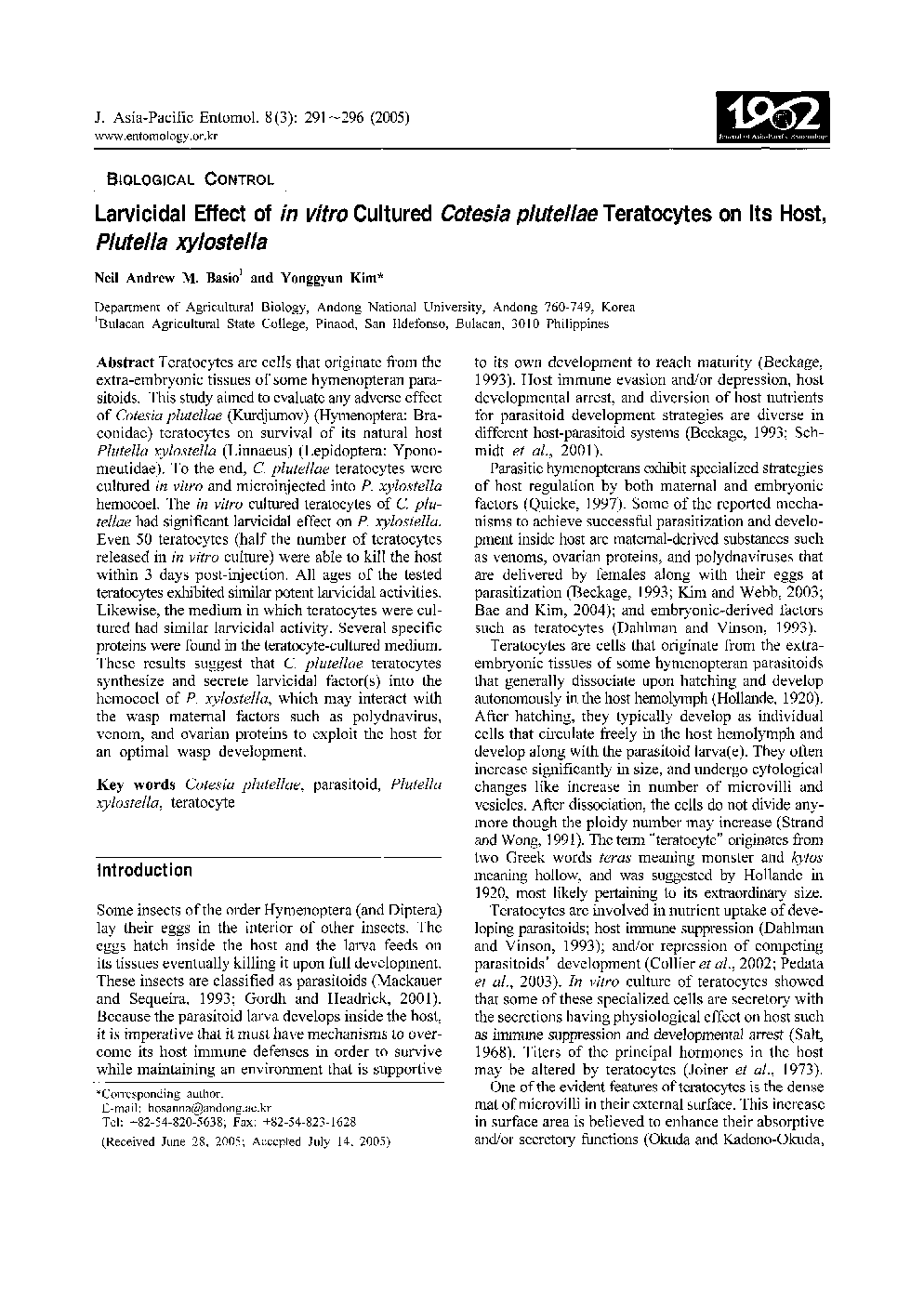| Article ID | Journal | Published Year | Pages | File Type |
|---|---|---|---|---|
| 9476748 | Journal of Asia-Pacific Entomology | 2005 | 6 Pages |
Abstract
Teratocytes are cells that originate from the extra-embryonic tissues of some hymenopteran para-sitoids. This study aimed to evaluate any adverse effect of Cotesia plutellae (Kurdjumov) (Hymenoptera: Bra-conidae) teratocytes on survival of its natural host Plutella xylostella (Linnaeus) (Lepidoptera: Ypono-meutidae). To the end, C. plutellae teratocytes were cultured in vitro and microinjected into P. xylostella hemocoel. The in vitro cultured teratocytes of C plutellae had significant larvicidal effect on P. xylostella. Even 50 teratocytes (half the number of teratocytes released in in vitro culture) were able to kill the host within 3 days post-injection. All ages of the tested teratocytes exhibited similar potent larvicidal activities. Likewise, the medium in which teratocytes were cultured had similar larvicidal activity. Several specific proteins were found in the teratocyte-cultured medium. These results suggest that C. plutellae teratocytes synthesize and secrete larvicidal factor(s) into the hemocoel of P. xylostella, which may interact with the wasp maternal factors such as polydnavirus, venom, and ovarian proteins to exploit the host for an optimal wasp development.
Related Topics
Life Sciences
Agricultural and Biological Sciences
Animal Science and Zoology
Authors
Neil Andrew M. Basio, Yonggyun Kim,
